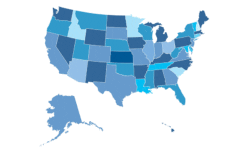Gas Pains
Law enforcement and security departments nationwide are hurting as the price of gas for their fleets strains budgets to the breaking point. Smart fuel management strategies can ease the impact.

When law enforcement agencies were putting together their fiscal year budgets for 2008, few campus and municipal administrators could have forecast today’s skyrocketing gas prices. Many departments have seen their fuel costs increase by 20 to 30 percent compared with what they budgeted for the year. That has prompted them to develop a number of formal and informal solutions to reduce their fuel and fleet-related expenses without scrimping on necessary services.
The list ranges from additional bicycle patrols to more alternative fueled vehicle options to sharing patrol cars. Agencies have also mandated changes in how officers operate their vehicles, such as reducing idling, eliminating warm-ups in the morning and restricting take-home vehicle usage.
Warming Up Patrol Vehicles is Wasteful
Bay County (Mich.) Sheriff’s Department deputies are parking and turning off their cars for 10 minutes each hour, setting up in a strategic location to monitor traffic. The policy has been in place since early May, says Sheriff John Miller. Another option might be to add new substations across the county to cut down on fuel bills, however the upfront cost for building substations can be prohibitive.
Such informal fuel-saving measures have also been put into place for the Bowling Green (Ky.) Police Department. The city had budgeted around $25,000 per month on fuel for its 127 vehicles. As gas prices have been rising, monthly costs now top $30,000 for the department’s 85 law enforcement vehicles alone.
Some of the informal measures that have been recommended by the department’s administration include not warming up vehicles in the morning, increasing bike patrols and reducing idling time as conditions permit, says Jon Lewis, fleet manager for the city of Bowling Green. “Some informal recommendations have gone out, but as prices rise, some of them may become more formal,” he says.
Lewis expects the department to save $1,000 to $2,000 by reducing idling times and not warming up vehicles. There are bicycle racks on the backs of all cruisers, and that strategy could save an extra few hundred dollars per month.
If you appreciated this article and want to receive more valuable industry content like this, click here to sign up for our FREE digital newsletters!
 Leading in Turbulent Times: Effective Campus Public Safety Leadership for the 21st Century
Leading in Turbulent Times: Effective Campus Public Safety Leadership for the 21st Century
This new webcast will discuss how campus public safety leaders can effectively incorporate Clery Act, Title IX, customer service, “helicopter” parents, emergency notification, town-gown relationships, brand management, Greek Life, student recruitment, faculty, and more into their roles and develop the necessary skills to successfully lead their departments. Register today to attend this free webcast!







